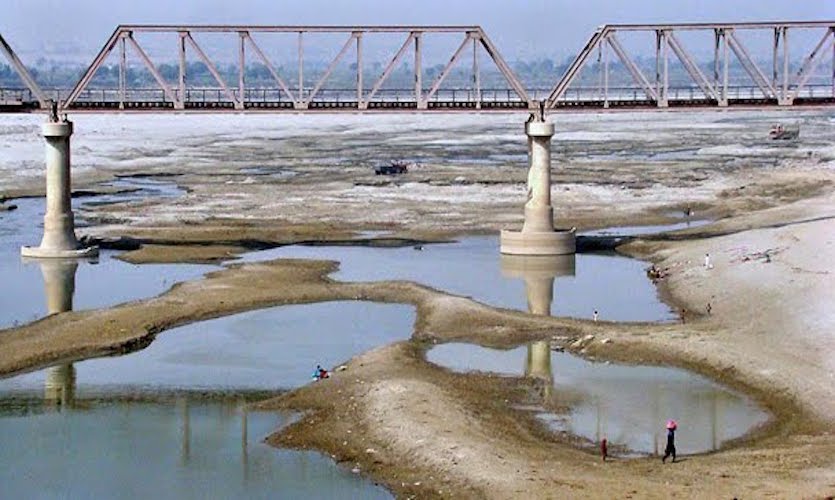Syed Murad Ali Shah, the chief minister of Pakistan’s Sindh province, has advised farmers not to cultivate rice as the country is facing an acute water shortage. He made the statement on Saturday while addressing the press in the Dost Khan Rind village in Sehwan Sharif, highlighting the issue of unequal inter-provincial water distribution amid the nationwide crisis. He also noted that the water shortage in the region is due to inadequate water in the Indus river system.
CM Murad Ali Shah was on a visit to Sukkur Barrage, where the officials indicated that despite the provisions of the three-tier formula, the federal authorities have reduced the amount of water released to Sindh. Some officials suggested that the province should demand its share, based on the Water Apportionment Accord of 1991. The Sindh CM advised the officials to not store water in dams to lessen the impact of the shortage on the cultivation of Kharif crops till the end of June. “If Sindh’s share is released on time, then we will be able to cope with the situation”, the CM added, noting that the province’s share has been drastically reduced because the 1991 accord has not been implemented since 2000.
These remarks were made a day after Manzoor Hussain Wassan, Sindh’s Agriculture Minister and senior leader of the Pakistan People’s Party (PPP) said that the province should receive their share of water based on the 1991 accord, and that any cuts will not be accepted. “Crops of mangoes, chillies, rice and dates in Sindh could be damaged due to water shortage,” he reportedly said, on Friday. Additionally, he also called out former PM Imran Khan’s administration, as Sindh received 16 percent less water during the last Kharif season, and 22 percent less water during the Rabi season.
According to Sukkur Barrage control room in-charge Abdul Aziz Soomro, the water at the Guddu, Kotri and Sukkur barrages has dropped to an alarming rate, and the shortage has increased from 40 to 51 percent. The situation could worsen as it comes amid heatwaves and higher temperatures across several regions in Pakistan, since March. According to the Pakistan Meteorological Department, March and April 2022 were the hottest months ever experienced by the country in the past six decades.
Farmers in Sindh have reportedly been receiving 50 percent less water than what they would receive if the 1991 water accord was abided. Farmers and authorities in Sindh have, reportedly, criticised the Punjab province for adding to their water woes. Syed Mahmood Nawaz Shah, senior vice-president of the Sindh Abadgar Board, a grower advocacy organisation, says that there is not sufficient water for drinking or farming in the region, and that the few underground sources of sweet water have also significantly depleted. Amid this crisis, provinces like Punjab have reportedly been expanding the hectares of land to be cultivated. “An increase of 440,000 hectares of paddy, mainly in Punjab, since 2016, and an increase of sugar cane cultivation in that province is a clear indication of excessive water use. Paddy, in Sindh, is restricted to certain areas but in Punjab, it is not,” he said. Mahmood Nawaz further indicated that at least 50 percent of the water is lost due to factors including theft, and that the issue of water shortage can be effectively addressed only if they are able to reduce these losses. A landlord in the city of Dadu, in Sindh, shared similar views, saying that they have data to prove when and how much water was “stolen” by Punjab, and that without proper implementation of the 1991 accord there is very little hope for the situation to improve.
Read more: Taliban Terminates Issuing Driving Licences For Women In Afghanistan
The acute water crisis that Pakistan is in the midst of is neither affecting just the Sindh province, nor is it a recent problem. According to the Pakistan Council of Research in Water Resources, the origin of the current crisis can be traced back to the 1950s. The water levels reached the “water stress line” in 1990, and subsequently reached the “water scarcity line” in 2005. It has reportedly been a combination of aspects over the years that includes depletion of water resources, alleged corruption in the management, opting for poor policy options, and inter-provincial conflict.
Additionally, a report by the Pakistan Institute of Development Economics released this year, has indicated that while 80 percent of Pakistan’s water resources are directed towards four major crops – rice, wheat, sugarcane and cotton – they only contribute 5 percent to the country’s GDP. Although the agricultural sector accounts for one-fifth of Pakistan’s economy and half of its employment, it contributes only 0.1 percent to the tax revenues, leading to a lack of funds for maintaining the decades-old water irrigation system.










